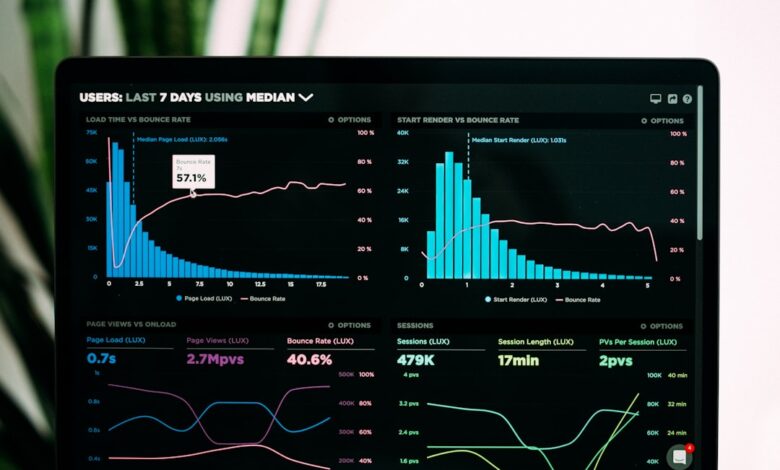Best Free Paper Trading Platform

Want to learn how to trade stocks without risking your hard-earned money? Paper trading, also known as simulated trading, is the perfect way to practice and develop your skills. It lets you use fake money to buy and sell stocks, options, and other securities, just like you would in the real market. The great news is there are several excellent free paper trading platforms available. Let’s explore some of the best!
What is Paper Trading and Why Use It?
Imagine you’re learning to drive a car. You wouldn’t start by speeding down the highway, right? You’d probably start in an empty parking lot to get a feel for the controls. Paper trading is like that empty parking lot for the stock market. It’s a safe space to learn the ropes without the fear of losing real money.
Here’s why paper trading is a smart move:
- Learn the Basics: Get comfortable with trading terminology, order types (market orders, limit orders, stop-loss orders), and how to navigate a trading platform.
- Test Your Strategies: See if your investment ideas actually work. Do your research and then put your strategies to the test. If they lose money in the simulation, you know to rethink them before risking real capital.
- Build Confidence: As you practice and see positive results in your paper trading account, you’ll gain confidence in your ability to make informed trading decisions.
- Avoid Costly Mistakes: Everyone makes mistakes when they’re learning. Paper trading allows you to make those mistakes without real financial consequences. Learn from them and improve your skills.
- Familiarize Yourself with a Broker’s Platform: Before depositing real money into a brokerage account, use their paper trading platform to understand its features and how to execute trades.
Top Free Paper Trading Platforms
Now, let’s dive into some of the best free paper trading platforms you can use to hone your skills.
Thinkorswim (TD Ameritrade): Thinkorswim is a powerful platform often considered one of the best, even among paid platforms. TD Ameritrade offers a robust paper trading environment integrated directly into their live trading platform. You get access to a wide range of instruments, charting tools, and technical indicators, just like the real thing. This makes for a truly realistic simulation.
Webull: Webull is another popular choice, especially among beginner investors. They offer a clean and user-friendly interface, making it easy to navigate and place trades in their paper trading environment. Webull is known for its commission-free trading, so the paper trading experience closely mirrors the real trading experience on their platform.
TradingView: TradingView is known for its excellent charting capabilities and social networking features. While primarily a charting platform, TradingView also offers a paper trading option. This is great for traders who rely heavily on technical analysis. You can practice your trading strategies directly on the charts. The social aspect also lets you share ideas and learn from other traders, though remember to always do your own research!
Plus500: Plus500 offers a demo account that simulates real trading conditions. It’s known for its wide range of available assets, including CFDs (Contracts for Difference), which can be a bit more complex. Because CFDs can involve higher risk, using a demo account with Plus500 is a good way to understand them before trading with real money.
Interactive Brokers: Interactive Brokers is a well-respected brokerage firm that offers a paper trading account as part of its Trader Workstation (TWS) platform. TWS can be a bit complex for beginners, but it offers a wealth of features for more advanced traders. If you’re planning on becoming a serious trader, getting familiar with TWS through paper trading can be beneficial.
Key Features to Look for in a Paper Trading Platform
When choosing a paper trading platform, consider these important features:
- Real-Time Data: The platform should provide real-time market data to simulate actual trading conditions as closely as possible.
- Variety of Assets: Access to a wide range of stocks, options, ETFs, and other securities allows you to practice trading different asset classes.
- Charting Tools: Good charting tools are essential for technical analysis. Look for a platform that offers a variety of indicators and drawing tools.
- Order Types: The platform should support various order types, such as market orders, limit orders, and stop-loss orders.
- Realistic Simulation: The platform should simulate real-world trading conditions as closely as possible, including slippage (the difference between the expected price and the actual price you get when executing a trade) and commission fees (if applicable).
- User-Friendly Interface: Choose a platform that is easy to navigate and understand, especially if you’re a beginner.
Important Considerations for Paper Trading
While paper trading is a valuable tool, it’s essential to remember that it’s not a perfect representation of real-world trading. Keep these points in mind:
Emotional Detachment: It’s easier to make rational decisions when you’re not risking real money. In real trading, emotions like fear and greed can significantly impact your decisions. Be aware of this difference and try to simulate the emotional aspect as much as possible.
Market Volatility: While paper trading platforms strive to simulate real-world conditions, they may not always perfectly replicate extreme market volatility. Be prepared for potentially larger price swings in real trading.
Slippage and Execution: In real trading, you may experience slippage, where your order is executed at a slightly different price than you expected. Paper trading platforms may not always accurately reflect slippage.
From Paper Trading to Real Trading
Once you’ve consistently achieved positive results in your paper trading account, you may be ready to transition to real trading. However, it’s crucial to start small. Don’t risk a large amount of money until you’re confident in your ability to trade successfully in the real market. Consider these steps:
- Start with a Small Account: Open a brokerage account with a small amount of money that you’re willing to lose.
- Trade Small Positions: Begin by trading small positions to limit your potential losses.
- Stick to Your Strategy: Don’t deviate from the trading strategies that you successfully tested in your paper trading account.
- Manage Your Risk: Use stop-loss orders to limit your potential losses on each trade.
- Continuously Learn: The market is constantly evolving, so it’s essential to continuously learn and adapt your strategies.
Frequently Asked Questions
Is paper trading exactly the same as real trading?
No. While paper trading simulates real-world conditions, it doesn’t fully replicate the emotional and psychological aspects of trading with real money. Also, slippage and order execution may not be perfectly accurate.
How long should I paper trade before trading with real money?
There’s no magic number, but aim for consistent profitability over a period of at least several months. This will give you time to develop your strategies and build confidence.
Can I make real money with paper trading?
No, paper trading uses simulated money. You won’t be able to withdraw any profits you make in a paper trading account.
Is paper trading only for beginners?
No, even experienced traders use paper trading to test new strategies or familiarize themselves with a new platform.
Which paper trading platform is the best?
The “best” platform depends on your individual needs and preferences. Thinkorswim and Webull are popular choices for beginners, while Interactive Brokers TWS is better suited for more advanced traders. TradingView is excellent for those who rely heavily on charting.
Paper trading is an invaluable tool for anyone interested in learning how to trade. By practicing in a simulated environment, you can develop your skills, build confidence, and avoid costly mistakes. Remember to choose a platform that meets your needs, and always be aware of the limitations of paper trading. Good luck, and happy trading!



